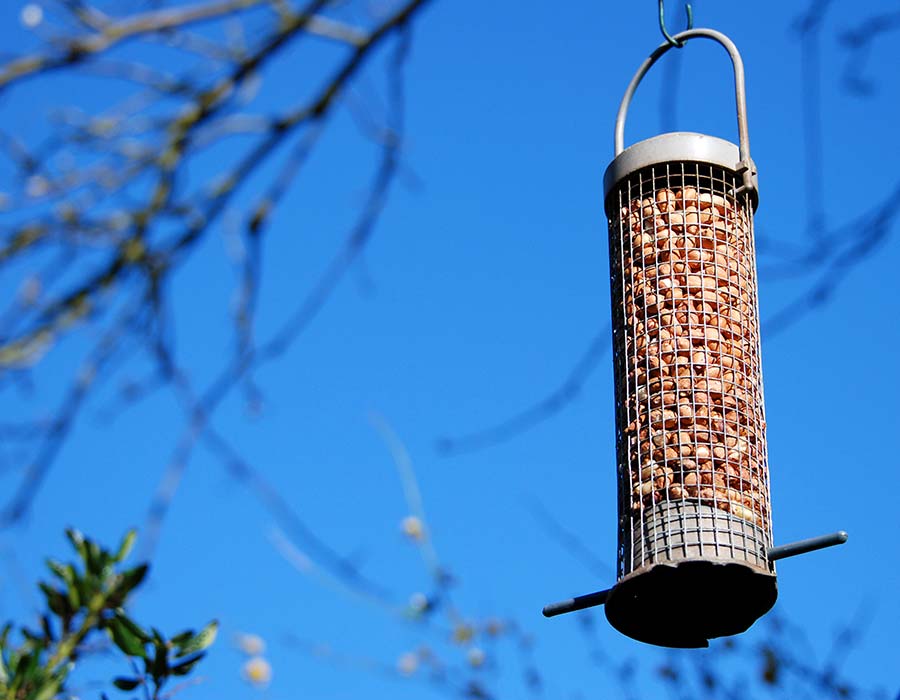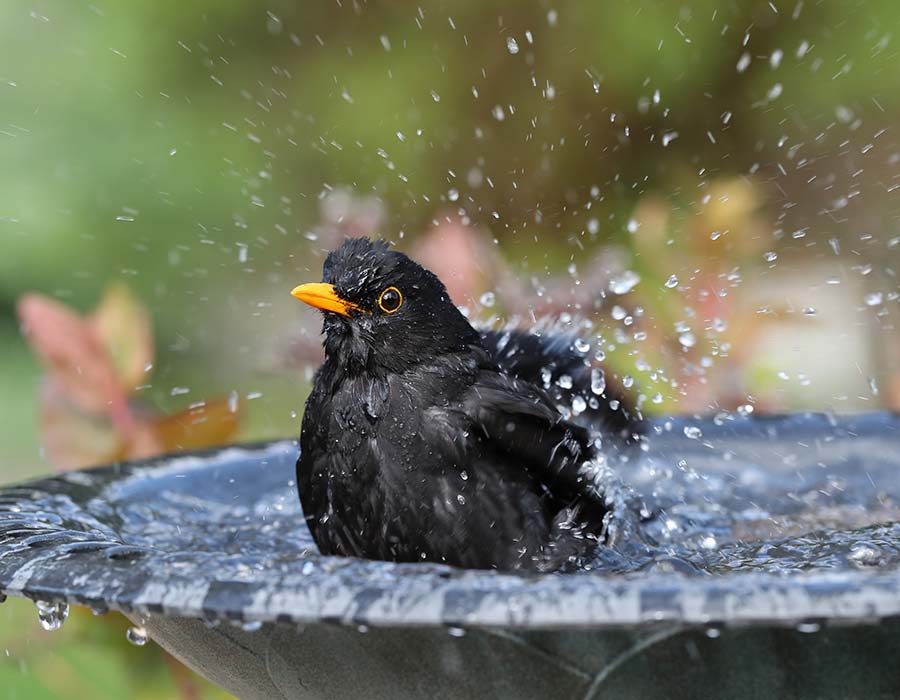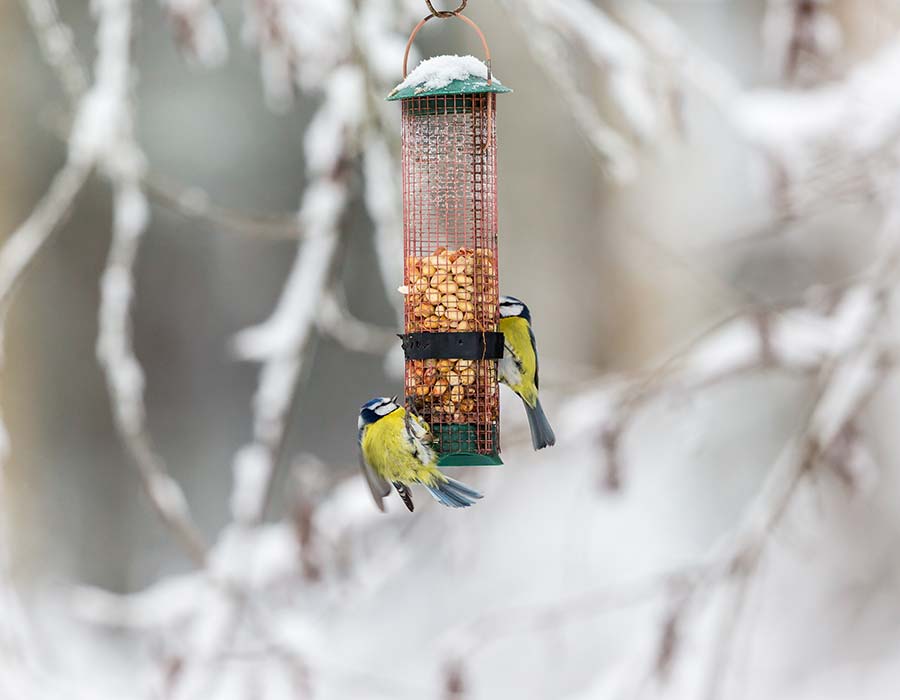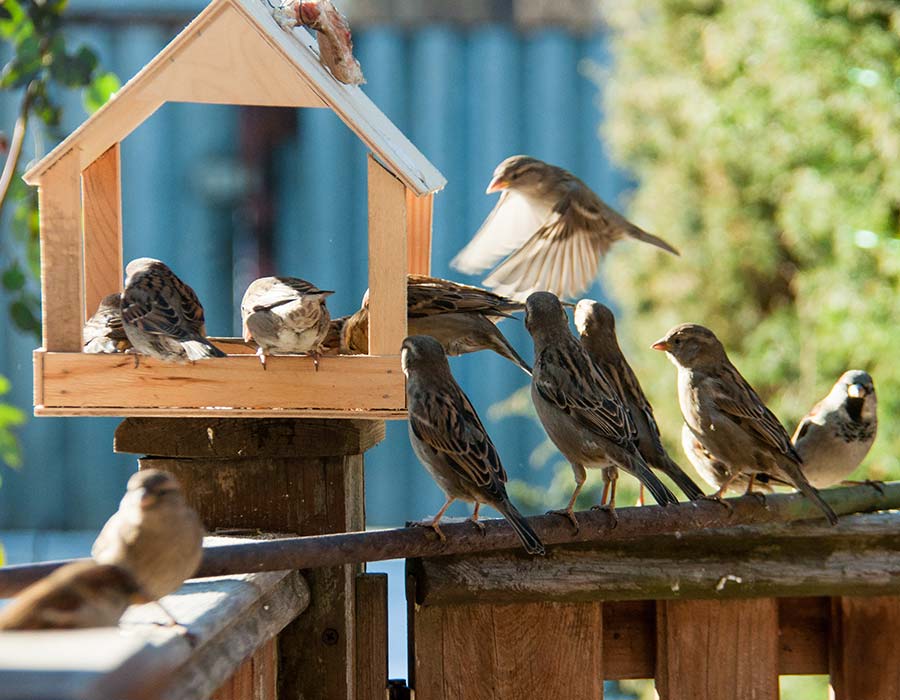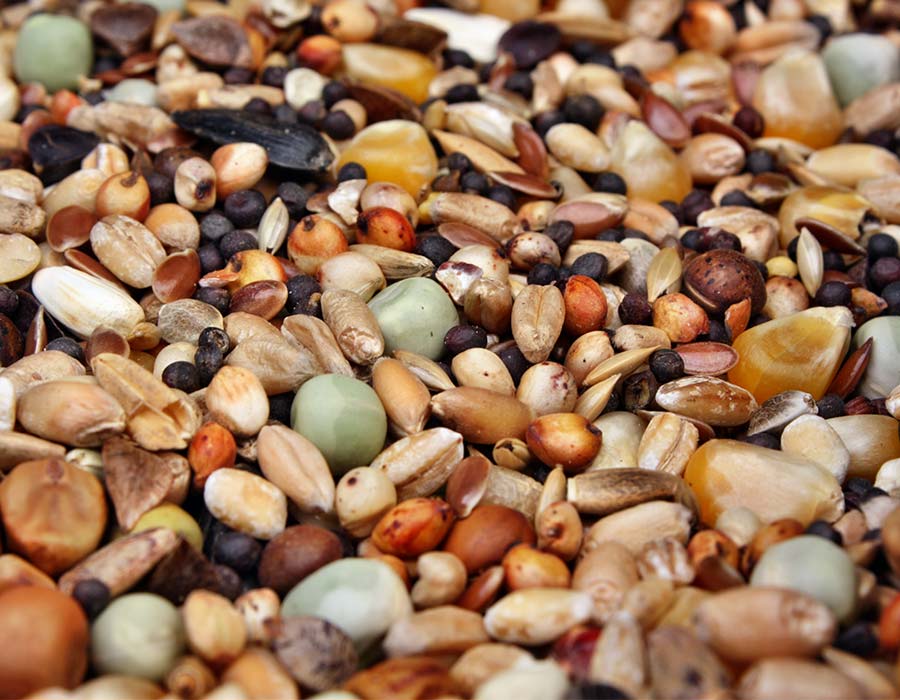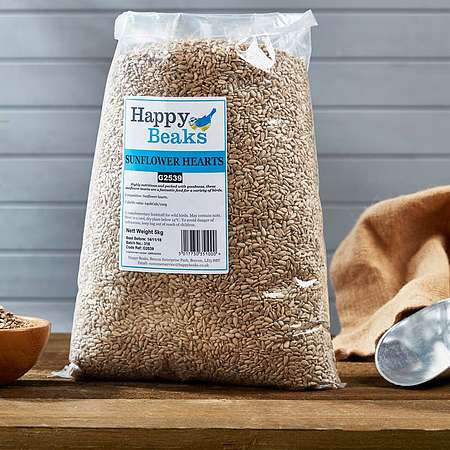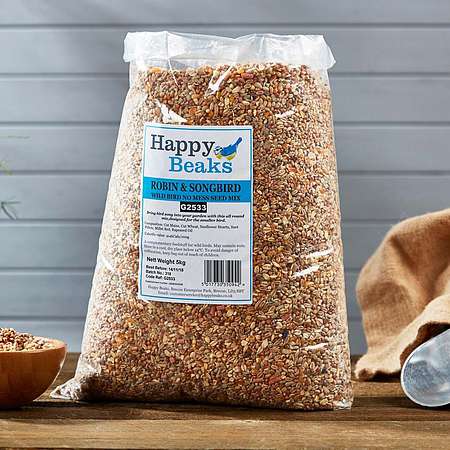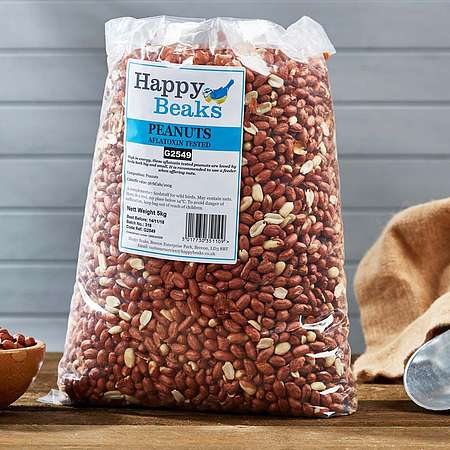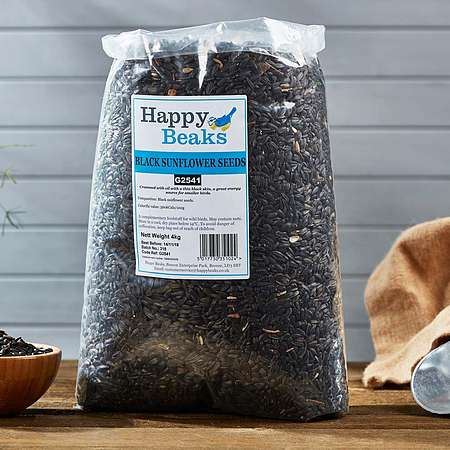Garden bird food guide
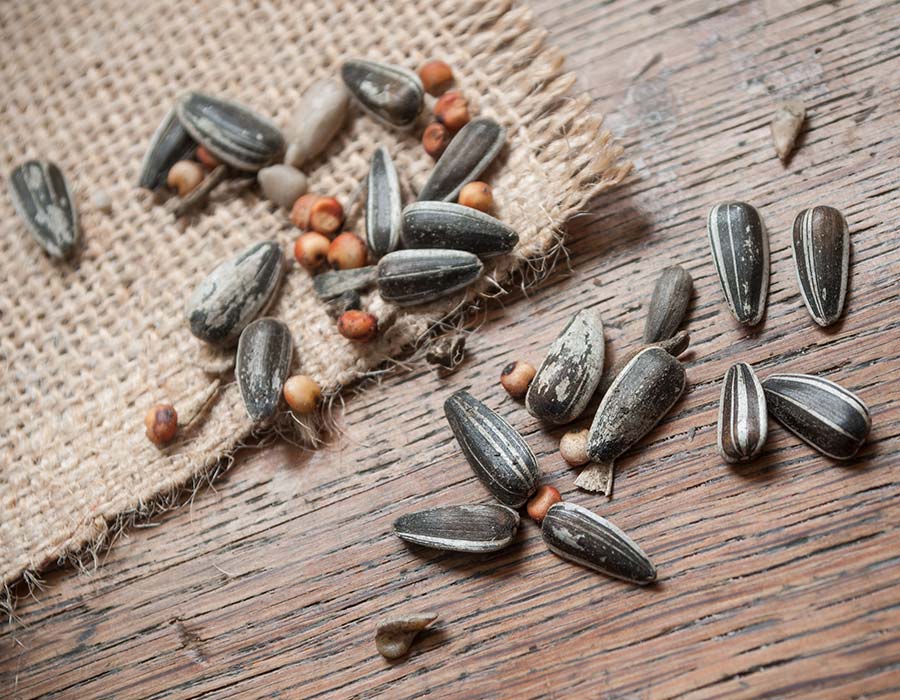
Feeding the birds that come to visit your garden is one of the most helpful things you can do to keep nature flourishing. There are a wonderful variety of garden birds, and nearly as much variety when it comes to how to feed them. So whether you’re new to garden bird feeding, or just want to try something new, here’s our no nonsense guide on the wonderful world of garden bird food.
Seed mixes
Seeds are the staple diet of a wide variety of species, of varying sizes. Pigeons to finches, doves to tits; they all love seeds. So why go for a seed mix instead of a specific seed? The answer is twofold.
First of all, by offering more than one type of seed, you optimise your chances of attracting as many birds as possible. Seeds are full of essential oils and vitamins and really are an efficient way to give those little beauties the energy they need.
Secondly, seed mixes can be designed to be suitable for a specific season, and even, for specific birds. For example a seed mix that doesn’t feature wheat is great if you want to give the little birds more of a chance of getting a meal. Want to cut down on mess? Look for a seed mix that has been “cut” or “de-husked” as this means less chance of germination, and less waste.
Straights
Simply put, a straight is a singular type of bird food. Some are more tailored to specific birds, while others should be fed in a specific way for safety.
- Peanuts - Perhaps the most common type of bird food, and much loved by finches, sparrows and tits. The high oil content means peanuts are one of the most energy efficient choices available. Peanuts should ideally be offered from a feeder, as they can be a choking hazard if taken whole.
- Sunflower seeds - For birds, sunflower seeds are a high in oil, protein and unsaturated fats option that can be more popular than peanuts. Popular with finches.
- Sunflower hearts - In simple terms, sunflower hearts are sunflower seeds that have been de-husked, and offer a no mess alternative.
- Niger seeds - A tiny seed that comes from Africa, and is loved by finches. Rich in fat, it is easiest to offer in a feeder to limit mess. Often mistaken for thistle seed.
- Mealworms - Naturally occurring food, is for many birds, hard to come by. Mealworms are jammed with protein and are particularly good for helping breeding birds. Robins and thrushes are attracted by the creepy crawly treat.
Suets and Fat
Suet and fatty foods has dropped off the menu for huge swathes of UK households, but for birds, fat means fuel. Suet is the fat from around the loins and kidneys of cows, and for birds it is an easy to offer source of vital energy.
There’s a plethora of choice available when it comes to fat for garden birds. Fat balls, bars, cakes and logs are the most popular, and feature a base fat, normally suet. Mixed with seeds, nuts and sometimes insects.
Some of these options require a specific feeder, but whatever you choose, you’ll be able to attract all manner of birds, with the great spotted woodpecker a particular lover of this high energy treat!
Fruit
If you’re lucky enough to have trees or bushes that bear fruit, then you’ll soon see robins, thrushes and blackbirds. If not, then don’t worry as you can also leave pears and apples on bird tables or specifically designed fruit feeders.
If you are able to offer fruit, or have fruit growing in your garden, then you’ll be giving flying visitors a high energy, high water treat that is crammed with all the simple sugars they need.
Leftovers
In general, it is best to have a common sense approach when it comes to bird food. Whatever you put out, just remember that if the birds don’t eat your leftovers, other creatures will. Salty foods should be avoided, as well polyunsaturated fats, which aren’t an efficient source of energy. It is also important to offer food in a size that is suitable for the birds you want to attract.
Here are just a few suggestions on what make for bird friendly leftovers!
- Fresh fruit - As above, fruit can be a great high energy snack and can be fed off the ground if need be.
- Bacon - As long as it is unsalted, the high fat content of bacon is great for birds such as robins and tits, especially in the winter.
- Bread - There is a lot of confusion around bread, but for many garden birds, including starlings and house sparrows, it is fine if offered in moderation. Soak stale bread overnight. Only put out as much bread as the birds can eat and only offer as an occasional treat.
Live foods
Many birds are insect eaters, or flycatchers, so if you exclusively offer seed mixes or straights you might not get the variety of visitors available to you. Now, if you are put off by the idea of creepy crawlies, or are having visions of maggots, then don’t worry. Live mealworms and waxworms are the most readily available choice of live food, but of course you can go for the dried variety if you still don’t fancy the wiggly version!
Live food is fantastic during breeding season, as it helps adults feed their hungry young. Just be aware that if the sparrows, dunnocks, warblers, jays, tits, starlings and robins realise there is live food on offer, you could turn your garden into a veritable aviary!
Happy Tip
Whatever food you buy, make sure you store it properly. If you leave the food in the bags for too long, it could get damp, or even be eaten by pests! Read our guide on bird food storage for more information.

